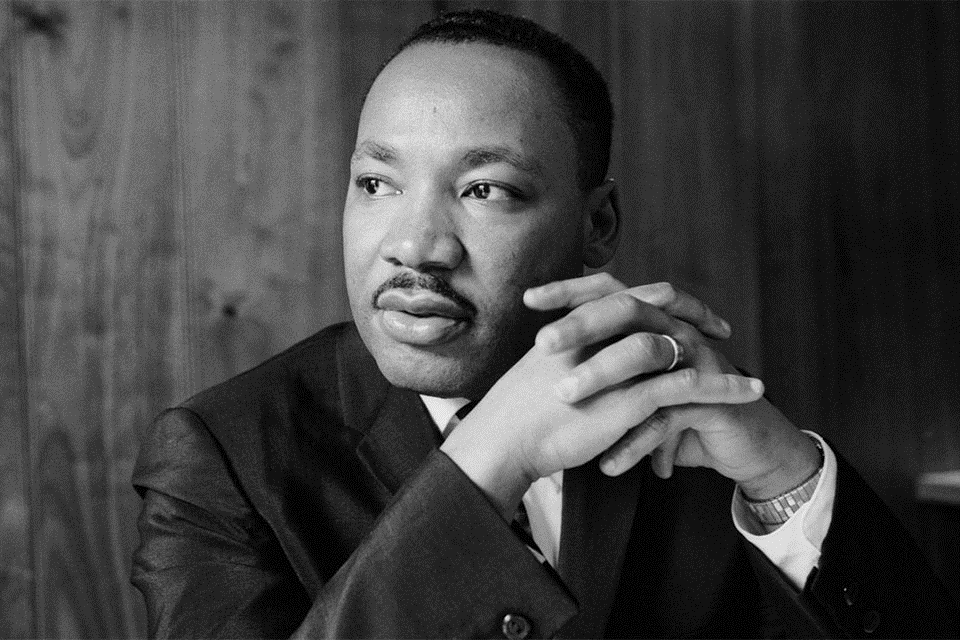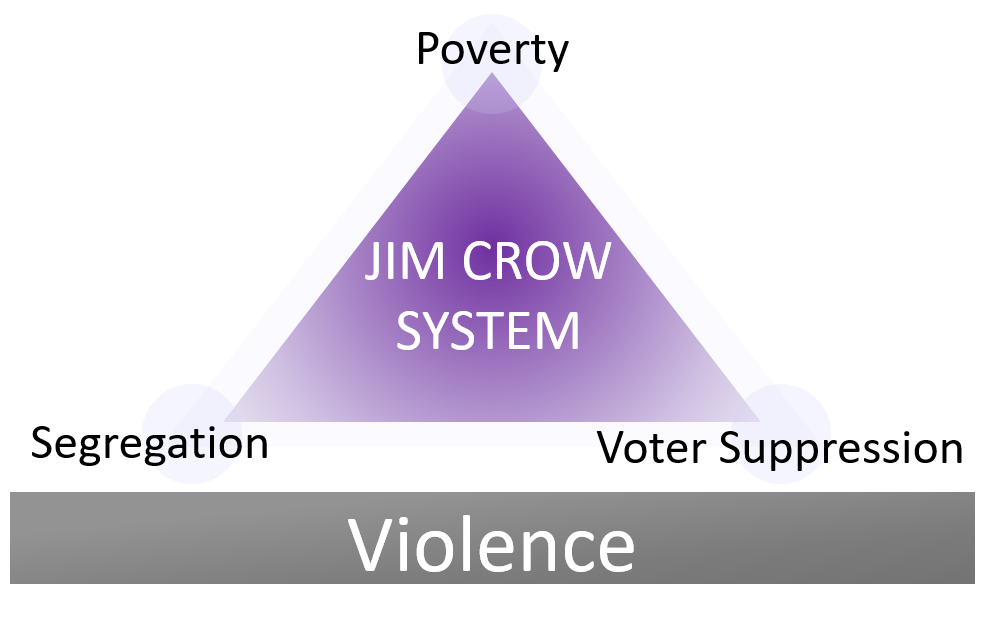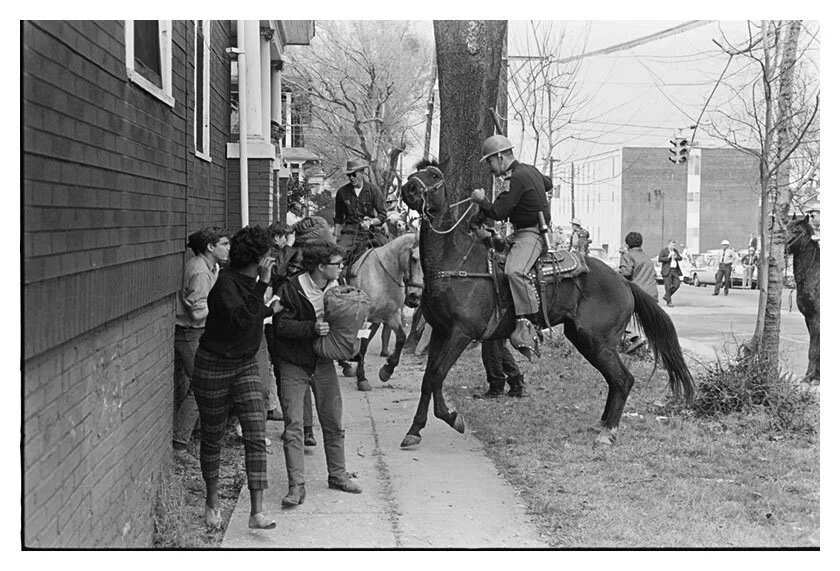Violence and the Jim Crow System
Today we all celebrate Dr. Martin Luther King, Jr. He is often remembered for his commitment to non-violent direct action as a means of activism.
Do you know what Dr. King was protesting against?
Dr. King and the millions of Black Americans who lived between the end of the Civil War and 1965 lived under a system known as Jim Crow. This week we will explore the key elements of the Jim Crow system that King and others worked to dismantle.
There were three elements of Jim Crow: segregation, voter suppression, and poverty. All three were maintained by violence or the threat of violence. Today, we explore the workings of violence under Jim Crow.
Dr. King is often remembered as a leader of “peaceful protest,” but civil rights protests were marked by violence nevertheless. The diverse groups of activists that worked alongside Dr. King to protest against Jim Crow racial segregation were themselves peaceful, but violence from White resistance raged all around them because the Jim Crow system was enforced by creating terror through violence.
In Dallas in 1921, a party of Klansmen kidnapped a black man, whipped him at gunpoint, and used acid to burn “KKK” on his forehead. The sheriff said he deserved it. (Dallas Magazine)
The most well-known form of violence used for this purpose was lynching: instances of mob violence, outside of the law, that resulted in the murder of over 4,000 black Americans between 1877-1950. These were not just hangings but also shootings, strangulations, stabbings, beatings, and often the disfigurement and dismemberment of victims’ bodies. These were public events and the perpetrators were well known to the community. Communities often gathered to witness them.
Black people were also regularly subjected to non-lethal physical and sexual violence as they went about their lives. Black women in domestic service were frequently victims of sexual violence. Riots, like those that swept the country in 1919, were attacks by angry White people who destroyed Black businesses and property and often forced Black people to leave their communities. If Black people didn’t follow the rules of Jim Crow, and even when they did, violence was always lurking. There were no consequences for the violence enacted upon Black people.
White children and adults, look on as a Black family packs a cart to leave their damaged home after the 1919 Chicago race riot. (Wikimedia Commons)
In Montgomery, Alabama, sheriffs on horseback trampled voting rights marchers near the state Capitol on March 16, 1965. (Glen J. Pearcy)
King and his contemporaries understood that there was violence under the surface everywhere in Jim Crow society. So they drew from domestic and international examples of activism to advance a strategy of non-violent direct action. This called for Black civil rights workers or activists and their allies to put their bodies in spaces where they were not supposed to be to apply non-violent pressure. That pressure released and exposed the terrifying violence that simmered below the surface of Jim Crow society. The violence inflicted on activists ranged from cigarettes extinguished on their skin to outright murder.
These civil rights workers trained to prepare for the abuse they would endure so they could respond without violence. The violence was often terrifying, though civil rights workers were so committed that they undertook risks anyway. Some described the feeling of fear leaving their bodies and feeling prepared to die for the movement.
We will explore Segregation in our next post tomorrow.






